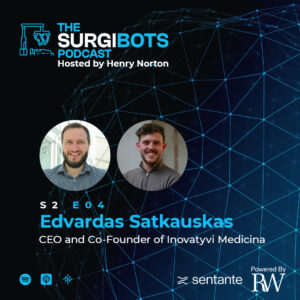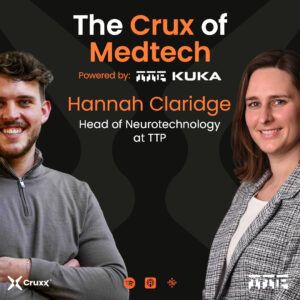Surgibots Podcast
S02 E04
Developing Seamless Surgical Robotics Workflows
On Episode 4 of Season 2 of The Surgibots Podcast I was joined by Edvardas Satkauskas, the CEO and Co-Founder of Inovatyvi Medicina, to talk about the process of developing a seamless clinical workflow through innovative surgical robotic technology.
Listen/watch now

Listen/watch now



